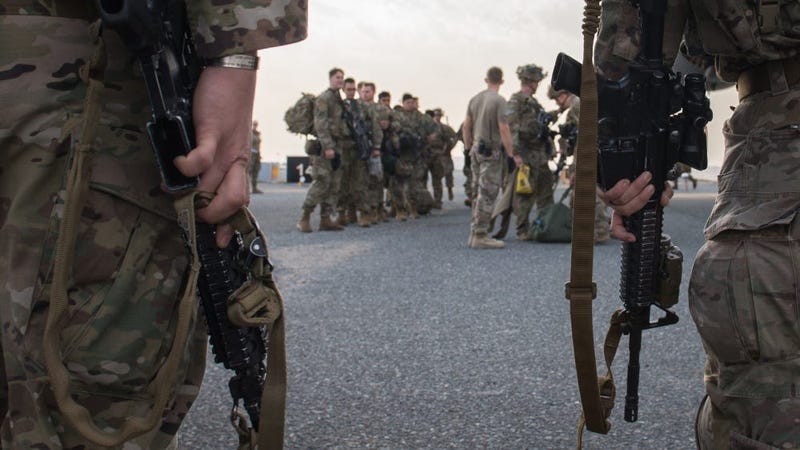
In moments of national crisis, either increasing military tensions or pandemics more and more people-- service members, veterans and civilians -- are wondering what it may mean for them.
The last time a draft was active in the United States was 1973 when the Selective Service was suspended after decades of conscription for various conflicts and in peacetime.
Curiosity about the draft apparently led the Selective Service website to crash in January, which the service system said was “due to the spread of misinformation” about the draft following the Iran missile attack. Google searches for words such as “conscription,” “draft” and “selective service” all spiked, memes went viral and #WWIII began trending.
Another spike happened in late March when President Donald Trump said he planned to recall some service members to duty to help respond to the coronavirus pandemic.
But it's not just the draft that has people concerned. Veterans, including retirees, can be recalled to duty in times of crisis.
How would a draft work?
If the military required additional troops after all available reserve service members were called to active duty, Congress and the president could reinstate a draft.
Women are not required to register for selective service since current law refers specifically to “male persons.” A Congressional commission is currently reviewing the male-only registration policy and is expected to create a report and recommendations by March.
History of the draft
A system of conscription was used during the Civil War and again during World War I. The draft was dissolved at the end of each conflict.
In 1940, before the United States entered World War II, the first peacetime draft was established. At the end of the war, the draft law was allowed to expire but was re-enacted fewer than two years later for the Cold War.
From 1948 to 1973, in both peacetime and during military conflicts, men were drafted. Conscription authority expired in 1973, but the Selective Service System remained in “standby” mode in cases of national emergency.
The United States has been in a near-constate “state of emergency” for about four decades, granting additional crisis-time powers to the president, including recalling veterans to active duty.
Recall to service
Enlistment contracts specifically say: “FOR ALL ENLISTEES: If this is my initial enlistment, I must serve a total of eight (8) years. Any part of that service not served on active duty must be served in a Reserve Component unless I am sooner discharged.”
Retirees, like draftees, are called to service according to several priority categories. The most likely are those who are not disabled, younger than 60 and retired fewer than five years, followed by those retired more than five years and then by disabled and non-disabled retirees of all ages and retirement dates. Some policies vary based on the branch of service and enlisted/officer status.
The likelihood of recall to active duty also depends on the demand for a retiree’s skills during a national emergency.
In 2017, President Donald Trump issued an executive order amending President George W. Bush’s executive order issued on Sept. 14, 2001. The amendment expands federal authority to recall retired service members to active duty.
Stop loss
Those currently serving on active duty or in the Guard or Reserves could be required to stay past their agreed-upon separation date.
The stop-loss policy can be put into place during times of national emergency.
Stop-loss was originally established after the Vietnam War, involuntarily extended enlistment contracts. It was used again following 9/11.
